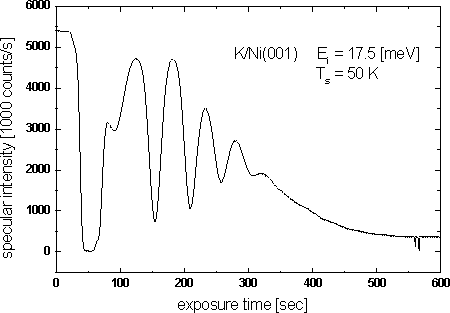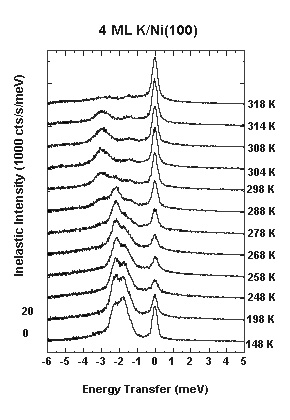
MPISF - Göttingen
Abt. Molekulare
Wechselwirkungen, Projekt 407
Structure, Phonons, and Diffusion on the Surfaces of Ultra-thin Films

 |
MPISF - Göttingen
|

|
|---|

 |
Abb.2. The series of time-of-flight spectra is obtained by scattering helium atoms with a kinetic energy of 12 meV from a potassium film on Ni(001) at different temperatures of the film. At 148K the film was 'nominally' 4 monolayers thick, but the two inelastic organ pipe peaks reveal the presence of 4- and 3 monolayer patches. The intensity of these peaks changes on raising the temperature until they disappear altogether and organ pipe modes related to a thinner film appear, indicating the layer-wise depletion of the film by evaporating the layer material. |